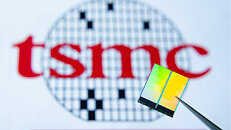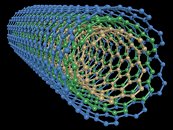Quantum Machines Announces NVIDIA DGX Quantum Early Access Program
Quantum Machines (QM), the leading provider of advanced quantum control solutions, has recently announced the NVIDIA DGX Quantum Early Customer Program, with a cohort of six leading research groups and quantum computer builders. NVIDIA DGX Quantum, a reference architecture jointly developed by NVIDIA and QM, is the first tightly integrated quantum-classical computing solution, designed to unlock new frontiers in quantum computing research and development. As quantum computers scale, their reliance on classical resources for essential operations, such as quantum error correction (QEC) and parameter drift compensation, grows exponentially. NVIDIA DGX Quantum provides access to the classical acceleration needed to support this progress, advancing the path toward practical quantum supercomputers.
NVIDIA DGX Quantum leverages OPX1000, the best-in-class, modular high-density hybrid control platform, seamlessly interfacing with NVIDIA GH200 Grace Hopper Superchips. This solution brings accelerated computing into the heart of the quantum computing stack for the first time, achieving an ultra-low round-trip latency of less than 4 µs between quantum control and AI supercomputers - faster than any other approach. The NVIDIA DGX Quantum Early Customer Program is now underway, with selected leading academic institutions, national labs, and commercial quantum computer builders participating. These include the Engineering Quantum Systems group (equs.mit.edu) led by MIT Professor William D. Oliver, the Israeli Quantum Computing Center (IQCC), quantum hardware developer Diraq, the Quantum Circuit group (led by Ecole Normale Supérieure de Lyon Professor Benjamin Huard), and more.
NVIDIA DGX Quantum leverages OPX1000, the best-in-class, modular high-density hybrid control platform, seamlessly interfacing with NVIDIA GH200 Grace Hopper Superchips. This solution brings accelerated computing into the heart of the quantum computing stack for the first time, achieving an ultra-low round-trip latency of less than 4 µs between quantum control and AI supercomputers - faster than any other approach. The NVIDIA DGX Quantum Early Customer Program is now underway, with selected leading academic institutions, national labs, and commercial quantum computer builders participating. These include the Engineering Quantum Systems group (equs.mit.edu) led by MIT Professor William D. Oliver, the Israeli Quantum Computing Center (IQCC), quantum hardware developer Diraq, the Quantum Circuit group (led by Ecole Normale Supérieure de Lyon Professor Benjamin Huard), and more.







































